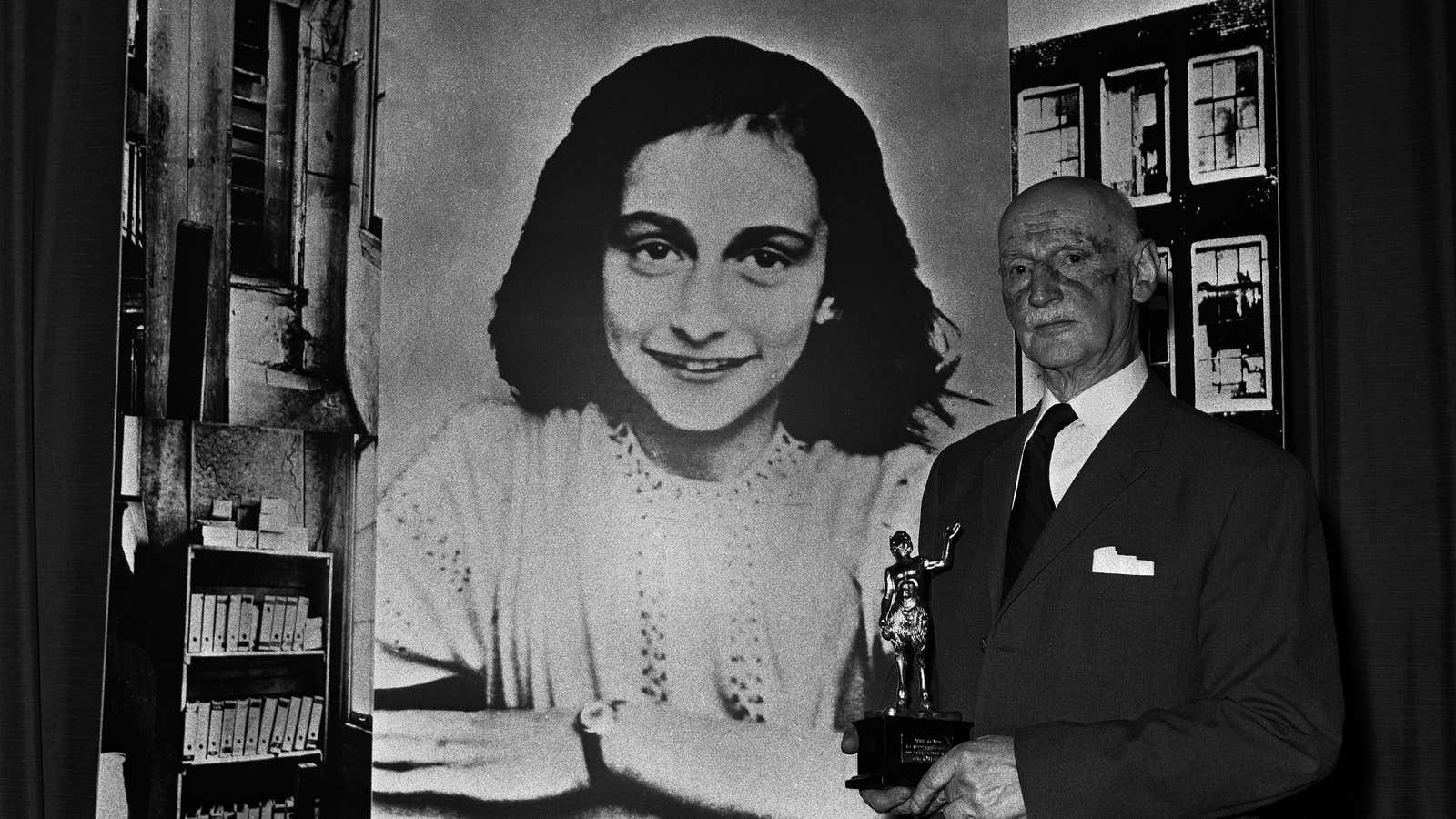Judith Jones had a taste for what Americans wanted. The legendary cookbook editor died today in Vermont, at 93.
Jones was famous for popularizing the cookbooks of Julia Child in the US. She also did early translation work for writers like Jean-Paul Sartre and edited John Updike. But one of Jones’s earliest literary credits is that she discovered the French edition of Anne Frank’s diary in a pile of rejected manuscripts when she was just 27.
As others have pointed out, the journey of the Holocaust account, originally written in Dutch, is remarkable. The story, like so many in publishing, demonstrates how easily masterpieces can be looked over, and how the fate of a manuscript can turn on a dime.
Frank’s diary, written over two years while in hiding in Amsterdam, before she was sent to a concentration camp, needed just one believer to bring it to the English-speaking world. It so happened Jones was that person. It was Frank’s now famous face that caught her eye.
A 2009 interview with the editor published in the Jewish Chronicle includes this anecdote:
“One day, my boss went off to lunch with his fellow editors, and left me with a pile of stuff,” said Jones, now senior editor and vice president at Alfred A. Knopf publishers, where she has worked since 1957. As she was going through the pile, “I came to this lovely face,” she recalled. It was the photograph of Anne Frank gracing the cover of the advance copy of the French edition of the book that caught Jones’ eye, and bid her to begin reading.
“I read it all day,” she said. “When my boss returned, I told him, ‘We have to publish this book.’ He said, ‘What? That book by that kid?’”
The book was published in English by Doubleday in 1952 as Anne Frank: The Diary of a Young Girl. It became a sensation, particularly for its passages in which Frank reaffirms her faith in humanity, despite the genocide she was witness to. The first printing was 5,000 copies, but after the book received positive reviews, another 15,000 copies, and then another 45,000, were printed.
For her part, Jones went on to have a fruitful career, putting her weight behind books she thought had promise, without any obvious precedent that they’d find an audience. She published a few of her own books, including a memoir and a title that celebrated the joy of cooking for one’s self.
